Search results
7 results found.
7 results found.
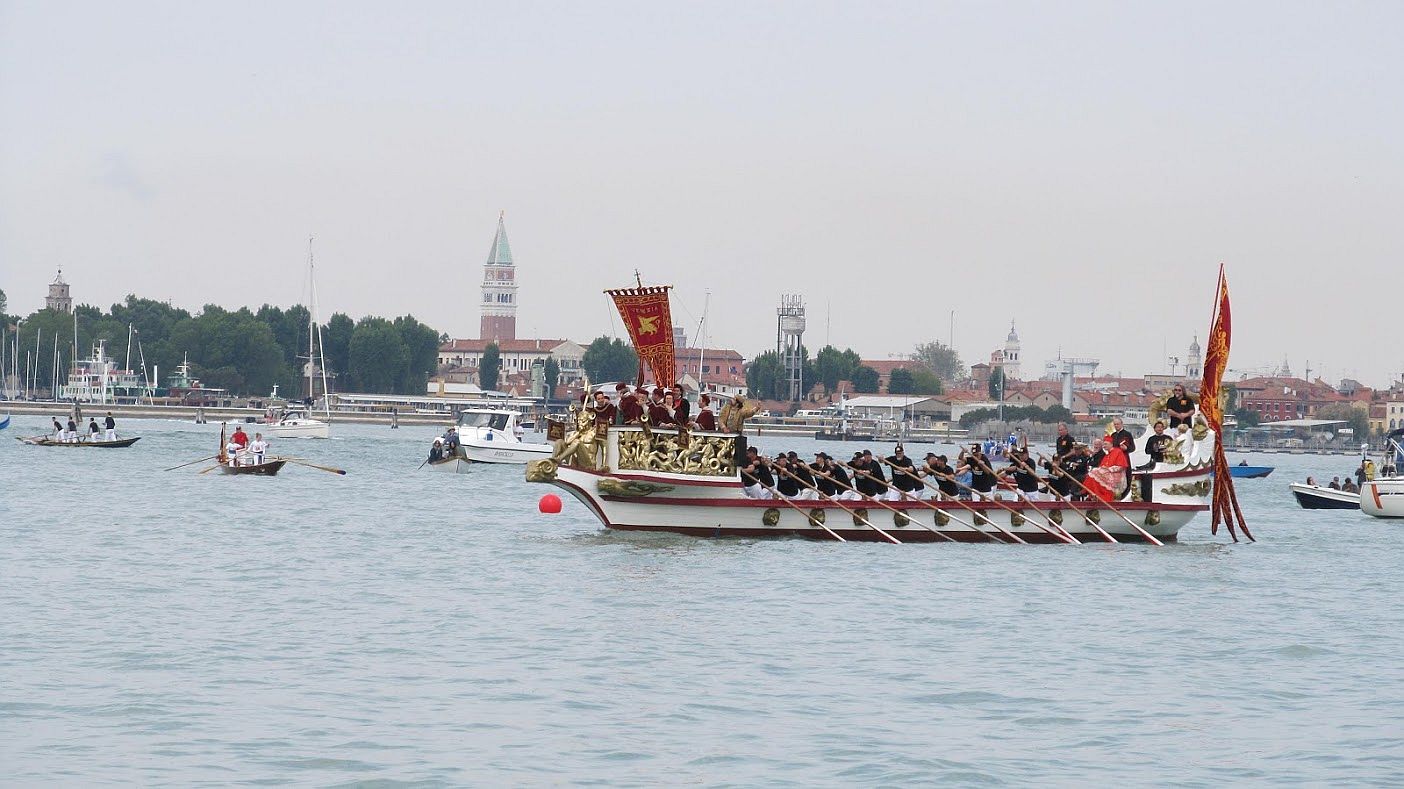

May is a special month to many people, for many reasons. I believe a million poets have made that observation.
For me, the month of roses and gobies and European flounder (there is definitely a poem in there waiting to be lured out), has always been one of the most stressful in the whole year. I would begin dreading May in February, because of two enormous, hence exhausting, annual events that involved Lino and me: the festival of the Sensa (Ascension Day) and the Vogalonga. (“Involved” means planning as well as execution; Lino is part of the Committee of the Sensa, and I would work in the registration office of the Vogalonga for the two weeks leading up to the event.)
Then I would participate in both events — the boat procession, or corteo, for the Sensa, proceeding from Venice to the Lido, and the Vogalonga, which when everything went well would take a good five hours. Things did not always go well; one year it took us seven hours to complete it, due to contrary wind and/or tide, some less-than-prepared rowers in our boat, etc. That’s not a complaint, just a statement. These things happen and you just grit your teeth and carry on. Apart from the rowing itself, we’d see many friends only once a year for the Vogalonga, so any empty spaces in the calendar or the energy of that weekend were filled with convivial (fancy word for “running far into the night”) gatherings in apartments, restaurants, boats, etc.
But this May is abnormal, melancholy, bizarre, because both events have long since been canceled, taking all that annoying confusion, exhaustion, and tension with them. And I’m still not happy! Because this is weird!
The Sensa has been reduced to the commemorative mass at the church of San Nicolo’ on the Lido; it will be attended by the usual personages, but there will be no boats, no tossing of the wreath or the ring, and no races. Why? Because GATHERINGS ARE FORBIDDEN. People would want to GATHER along the shore to watch, and the rowers would certainly be gathered in their boats (forbidden), and the boats would be gathered, and just no.
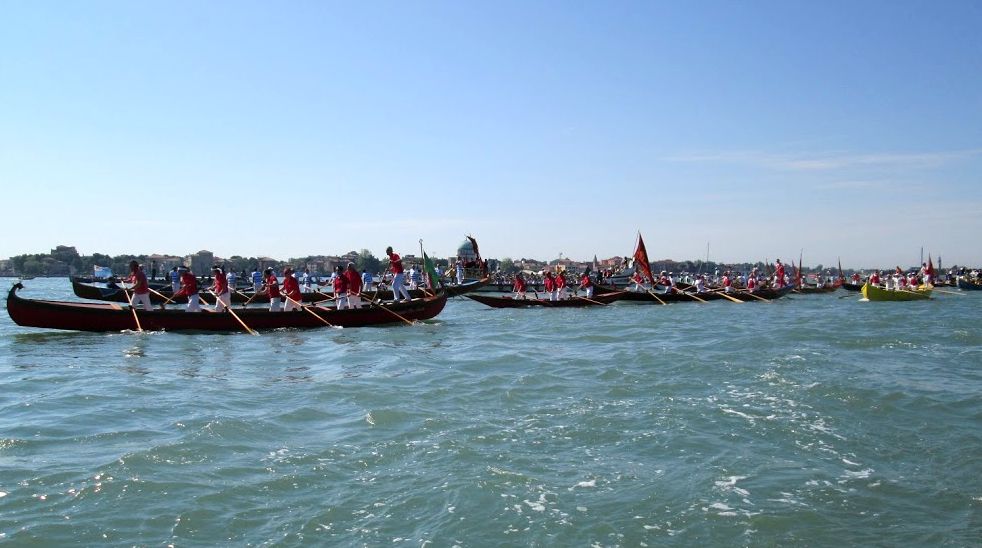
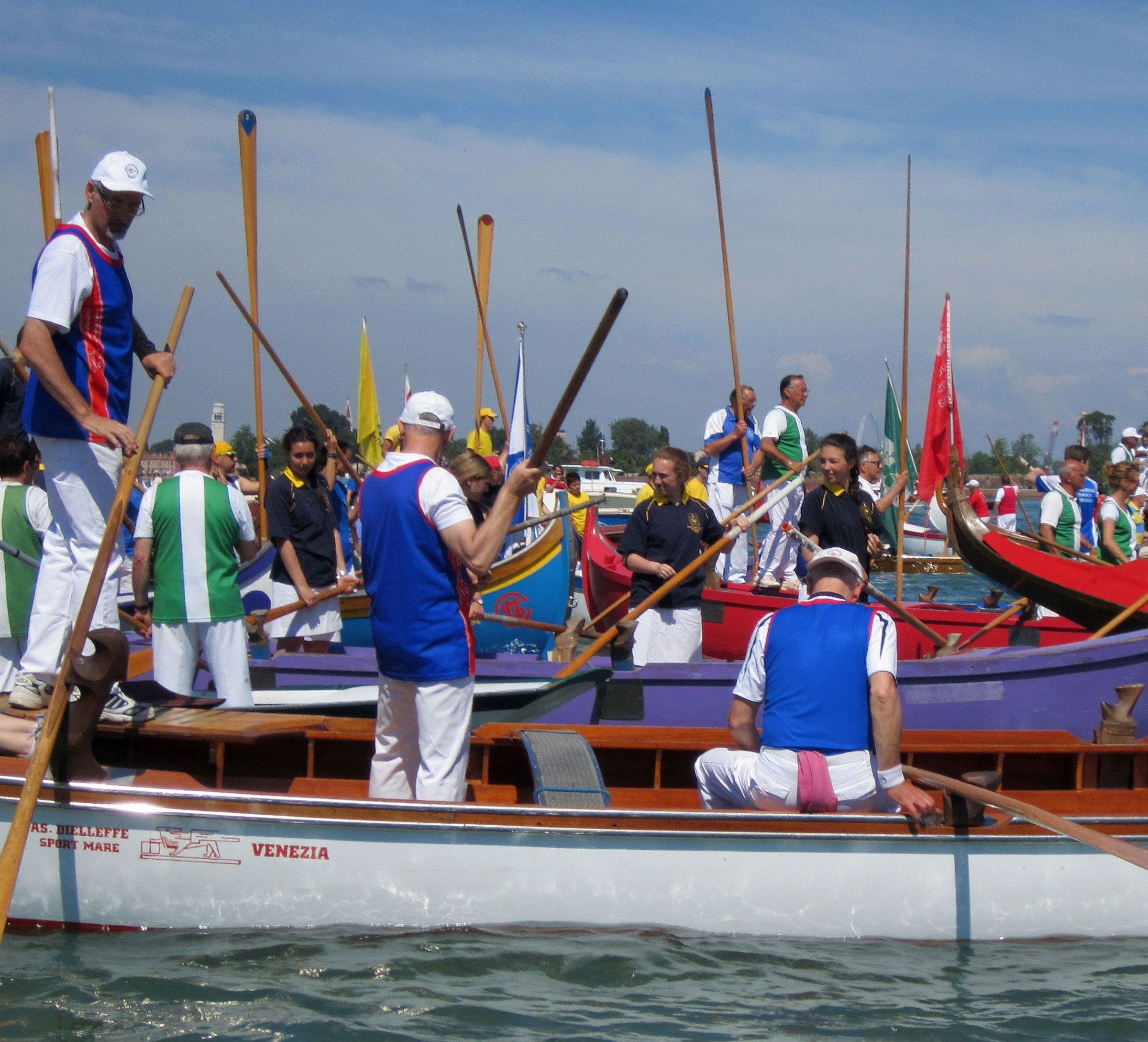
I suppose some private boats could form a procession, each one rowed by the permitted maximum of two people, but that would be even sadder than no boats at all. I told Lino I thought it would extremely cool if every boat club would send their big representative boat, but instead of a full crew each one could be rowed by two people (even the boats that are set up for ten, or 12, or 14 people) or — even better! — rowed by just one person. He said he didn’t think there were that many individuals capable of rowing a big boat by themselves, so there goes that little inspiration. Also, only I have this sort of crackpot idea.
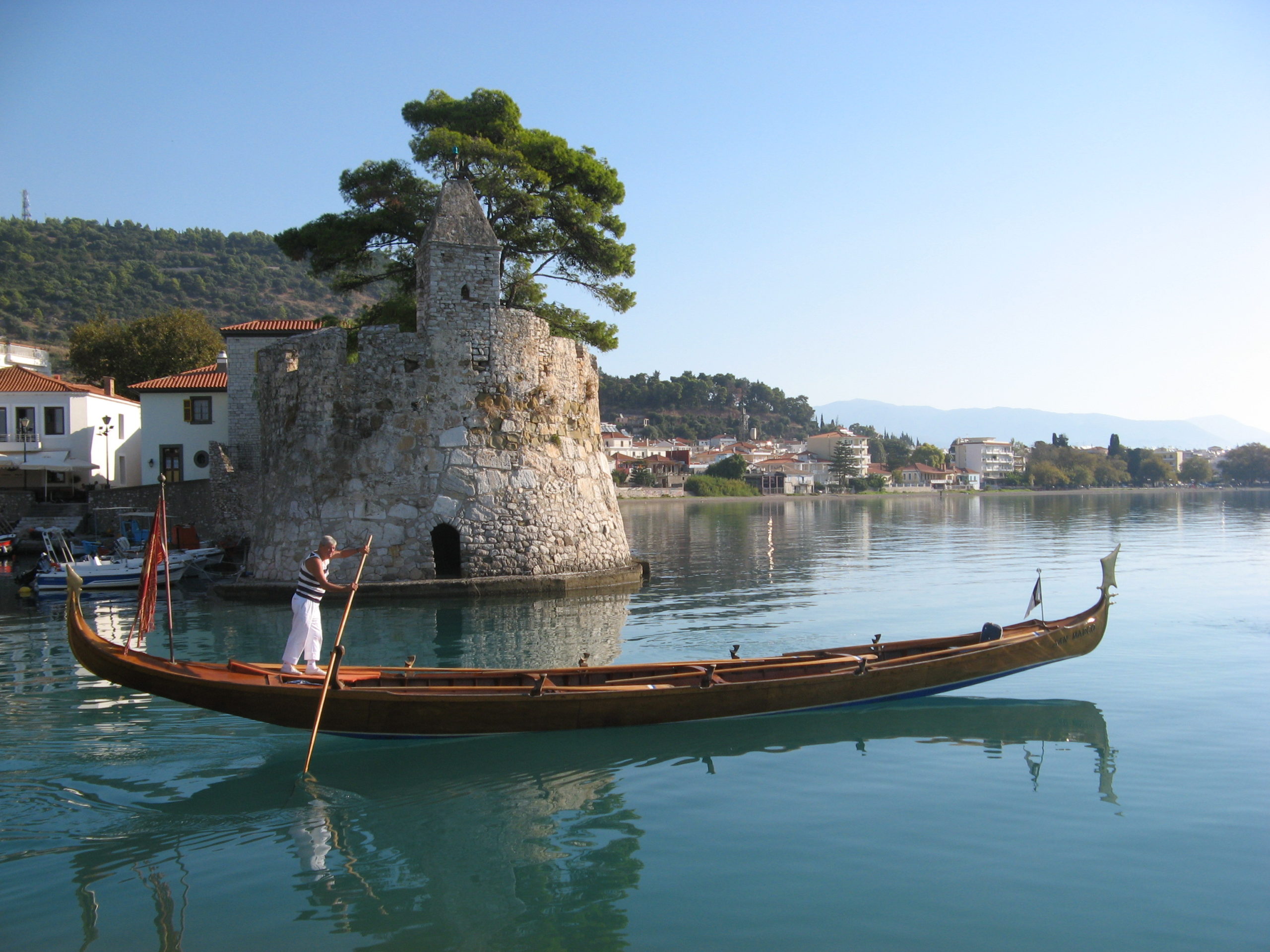
But back to reality. The limitations on rowers would make it impossible to form a corteo. Here is the list of regulations from our boat club; notice that using the boats requires booking a time slot to ensure that only the rowers going out are permitted to even be in the clubhouse. Fine, it was just a fantasy.
“It is forbidden to use the changing rooms and showers in the club. Boats may go out with one rower. Boats with two rowers can go out if they respect the minimum distance of two meters between them in the boat. More than two rowers can go out without respecting the distance requirement EXCLUSIVELY if they are family members who are living together. Use of the mask is OBLIGATORY (worn in the correct manner, that is, covering the mouth and the nose) before and after rowing (one boards and descends from the boat with the mask on). Booking the time of going out and returning will be made EXCLUSIVELY on the WhatsApp group of the club, allowing 20 minutes between exit and return time in order to avoid meetings (overlapping, running into other people, however you want to put it) in the clubhouse. If on return you find that another boat is preparing to exit the club, wait at a distance till the other boat has departed. Seeing the situation, to guarantee the safety and health of all members, the Council of Directors will look at the recorded videos to ensure that all the members respect these rules. Anyone who goes out MUST, on return, wash the club’s boat and oars with water and bleach-based soap provided in the club.”
The Vogalonga — this year would have been the 46th — was scheduled, as always, a week after the Sensa — May 31, to be precise. It has never been canceled, even in the worst weather. A pandemic is clearly so much worse than weather. Besides, no one can travel, the hotels are closed, and just to review the basics: Gatherings of people are forbidden. If some 2000 boats in the water don’t constitute a gathering, then we need a new definition.
So the two big events that made May matter have been expunged and left only its husk ready to fall off the calendar just like March and April have already done. What an ignoble end to a once-princely month.
Happily, spring is proceeding with its usual nonchalance, bestowing any number of special gifts (do they still qualify as gifts if you count on getting them every year?). Blackbirds singing at dawn and at sunset, the limetrees just beginning to waft their delicate perfume along viale Garibaldi, the first magnolia on the tree next to General Emo Capodilista. The signs of the season haven’t failed us.
And we’re well underway with the artichokes (their moment is almost over), and fresh peas and asparagus. The fruit is in that awkward stage between winter and summer — we’re bored to death with apples and bananas, but the first cherries are expensive and flavorless, the apricots should be ashamed of pushing themselves forward so aggressively because they are definitely not ready yet, and some vendors are offering melons, for Lord’s sake. Everybody knows that melons were put on this earth to save your life in July and August; in May you might as well just sell photos of melons, the taste would be the same.
Fish, however, are having their moment. “Quando la rosa mette spin’, xe bon el go’ e el passarin.” When the rose puts out its thorns, the gobie and the flounder are good. Seppie belong in this category too, but it doesn’t rhyme.
Lino, who has fished all year long all his life, tells me this: “The go’ are always in the lagoon. The passarini lay their eggs in December and go out into the Adriatic; they come back in between March and April. The seppie begin to come into the lagoon in March. In May and June the gilthead bream, striped seabream and sea bass come in to lay their eggs….” I know things are proceeding according to plan because we have seen little swarms of fingerlings in the canal several times.
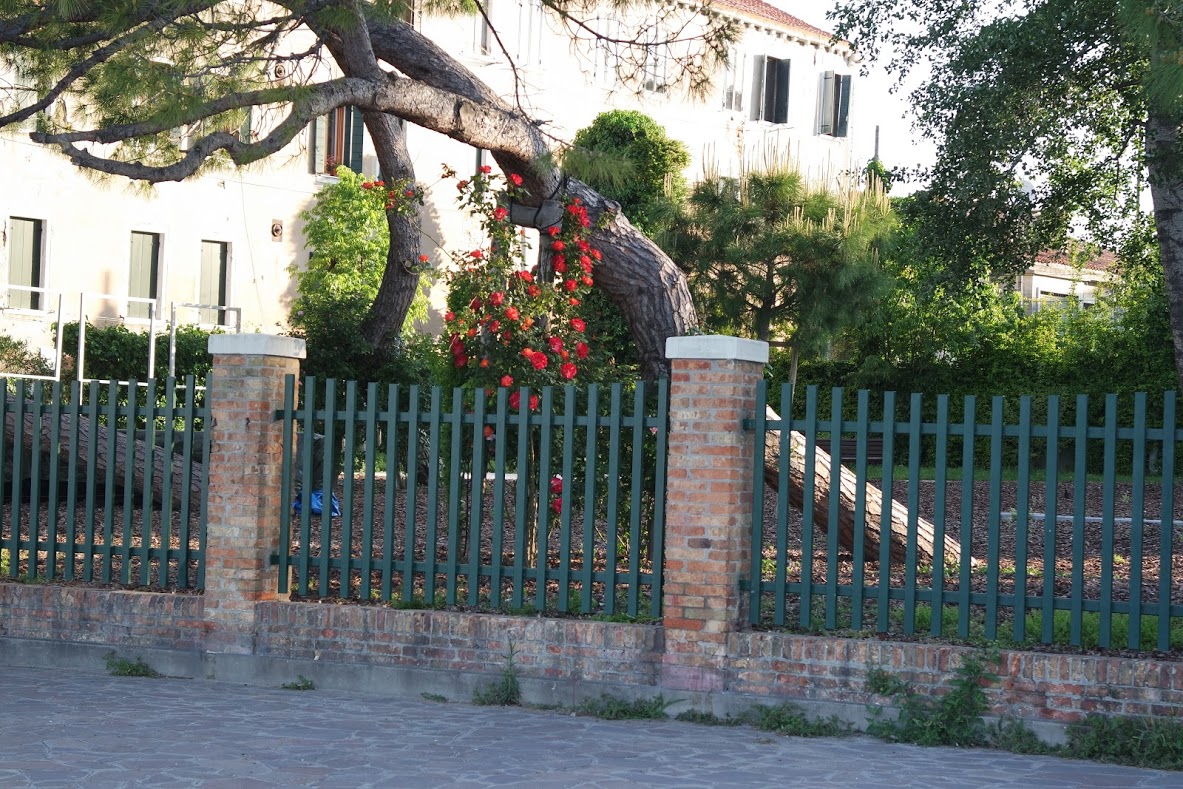
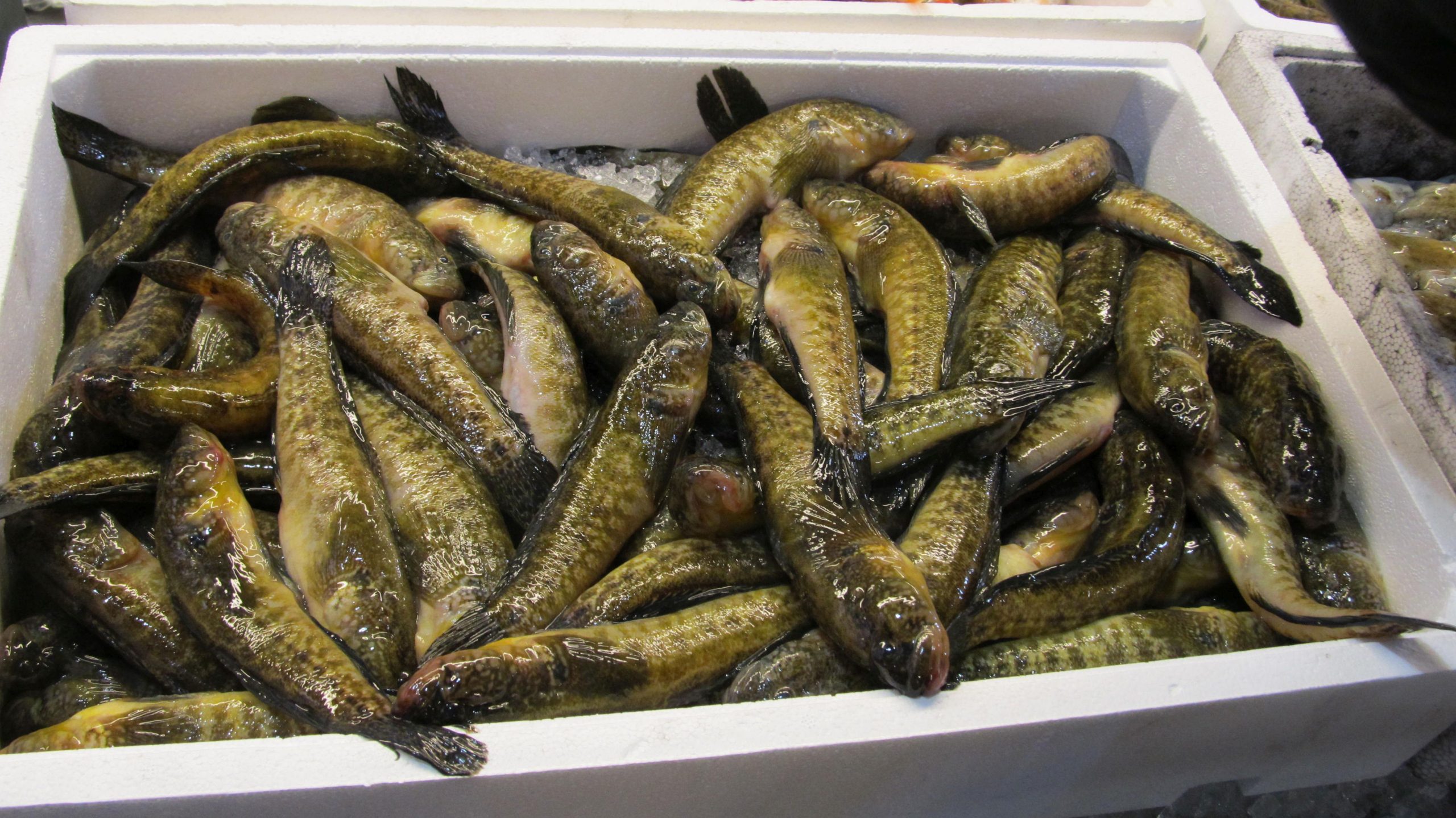
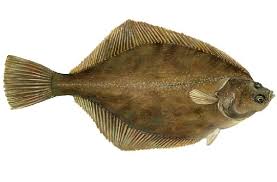

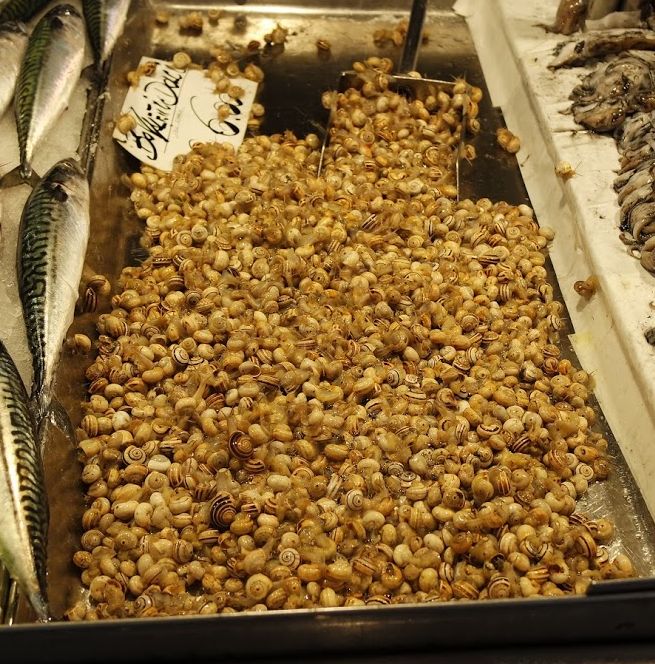
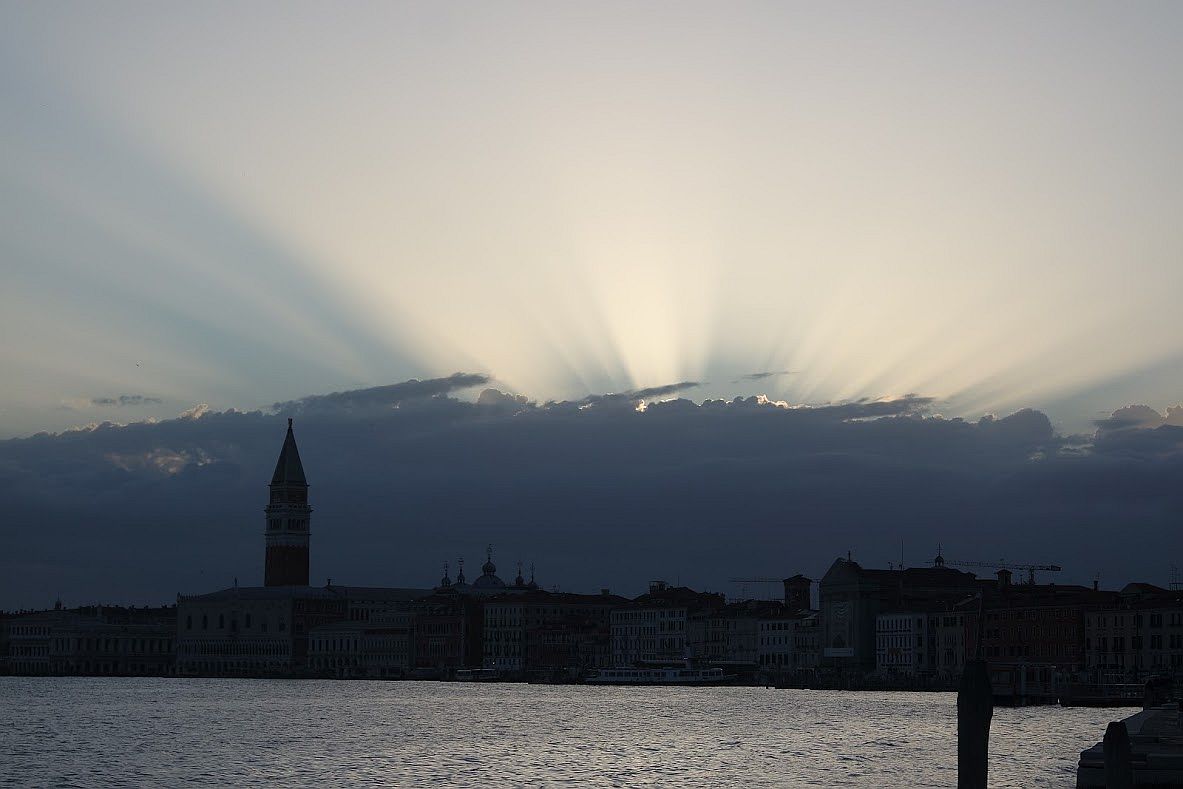
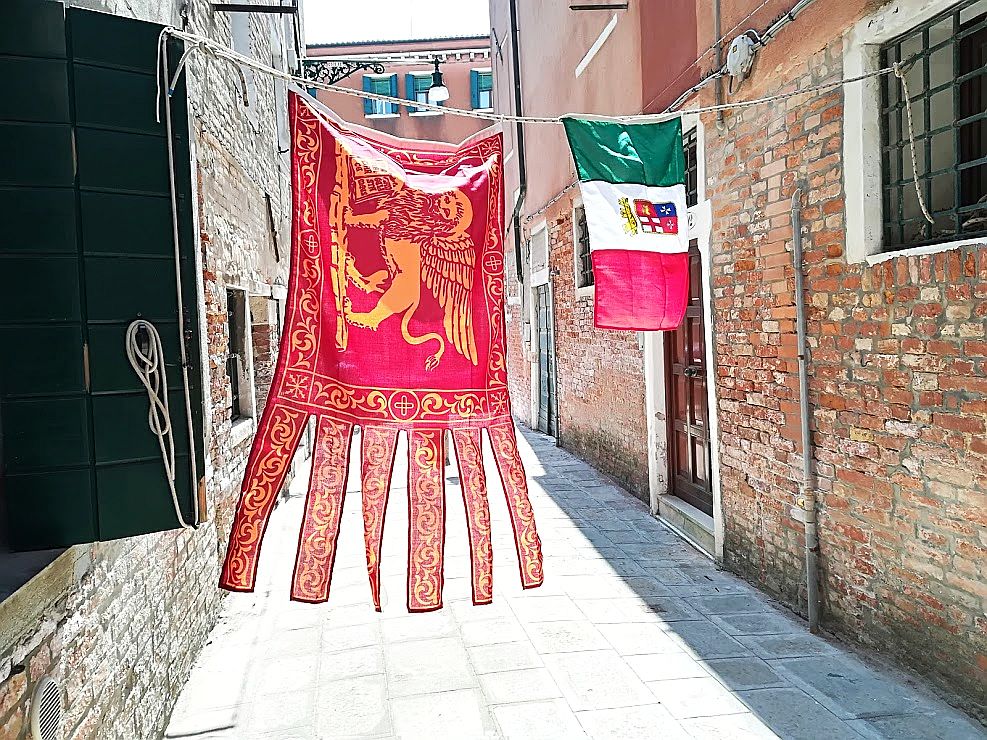
Yesterday, April 25, was the feast day of San Marco, who is, as all the world knows, the city’s patron saint. Always the occasion for grand festivizing — ceremony in the Piazza, laurel wreaths on the main monuments, high mass in the basilica, and the iridescent tradition of the “bocolo,” (BOH-ko-lo) or long-stemmed red rose, that Venetian men give to the dearest ladies in their life.
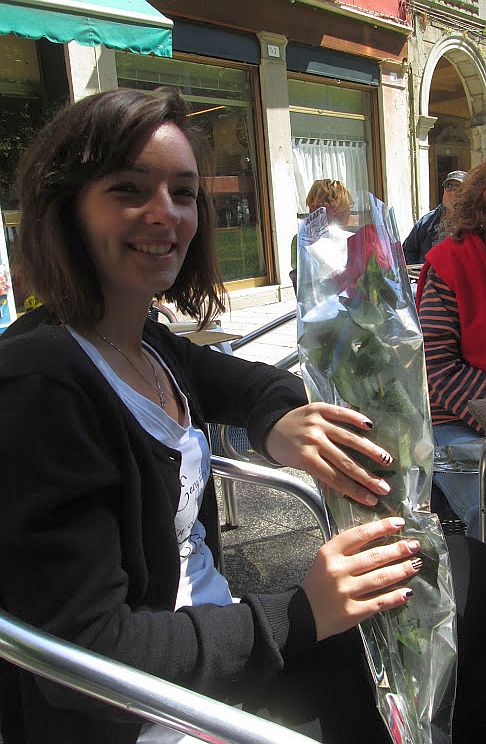
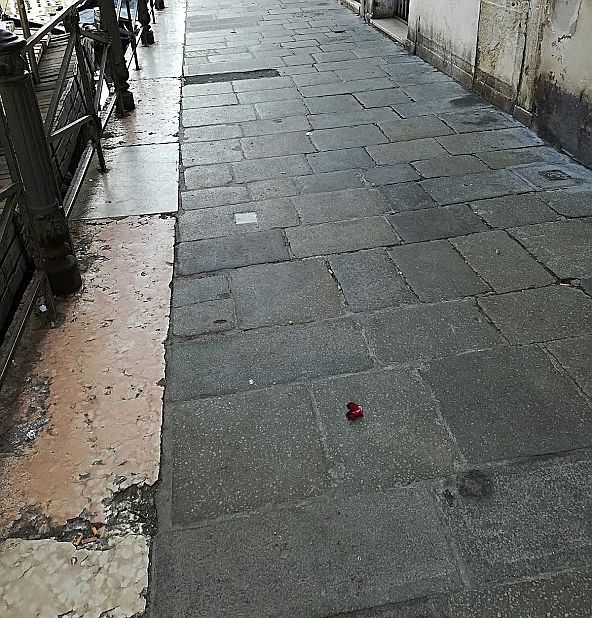
Yesterday, we were bocolo-deprived. Plant matter was represented mainly by the laurel wreaths, installed a few days early. As for the bocolo, there were and there weren’t. Of course we knew that the usual freelance vendors staking out via Garibaldi and environs would be nowhere to be seen, that was to be expected. But don’t be downhearted: The Gazzettino published a little article on Friday saying that a few florists were not only going to be selling roses, they’d deliver them to your doorstep. Wonderful! But the article did not publish any names or phone numbers of these florists. Saturday — the day itself — an article appeared repeating the plan, with the names and numbers of the participating florists. Lino immediately called to order one for me (and to discover the heretofore unknown cost, which I estimated would be 3 euros for the rose and 40 euros for the delivery), only to hear “Oh no, you had to book them.”
So this little misadventure will be filed under “You had one job!”, for the florists as well as for the Gazzettino.
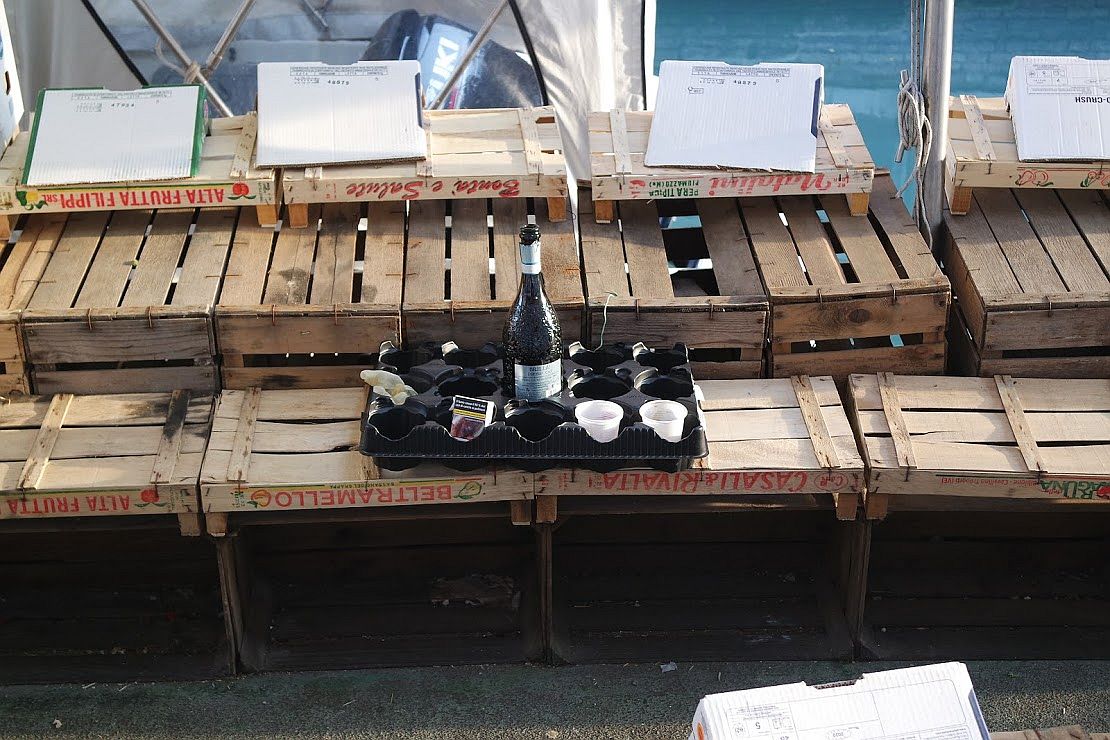
But no matter! We had a fine day, sunshine, breeze, empty streets, sepulchral silence broken by the occasional bellowing and screeching of dogs passing in the street or on the bridge outside our house. (If you don’t believe that a dog can screech, you haven’t met that long-haired dachshund who evidently can’t stand anything about life, and whose owner must be deaf.)
We took our usual early-morning walk along the waterfront to the end of Sant’ Elena and home again (2.7 miles, for the record), plus our ten crossings of the bridge outside — our personal stone Stairmaster. And we feasted on little kidchops — removed from young goats, not the usual lamb.
We then “went to the beach” after lunch, which is what I call our hour of sitting on the edge of the canal a few steps from our front door. We’ve had two straight weeks of sunshine, so this interlude is a high point of the day; even though we aren’t tanning in any meaningful way. we’re stoking our Vitamin D. And we look at our little boat tied to its pilings directly across the canal, and the lush greenery that is growing on the bottom of the hull, and wonder when we’ll ever row her again. The easing of some restrictions are expected to begin on May 4, but we’ll know only on May 4 if that will turn out to be true. Or, if the Gazzettino is really up to speed, we’ll find out on May 5.
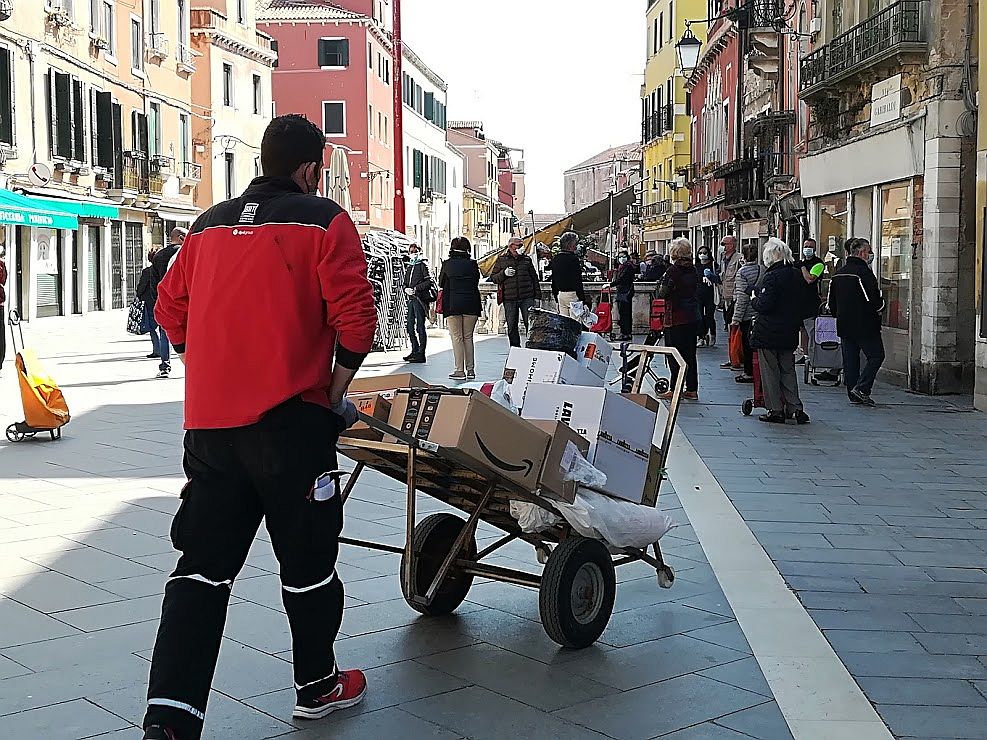
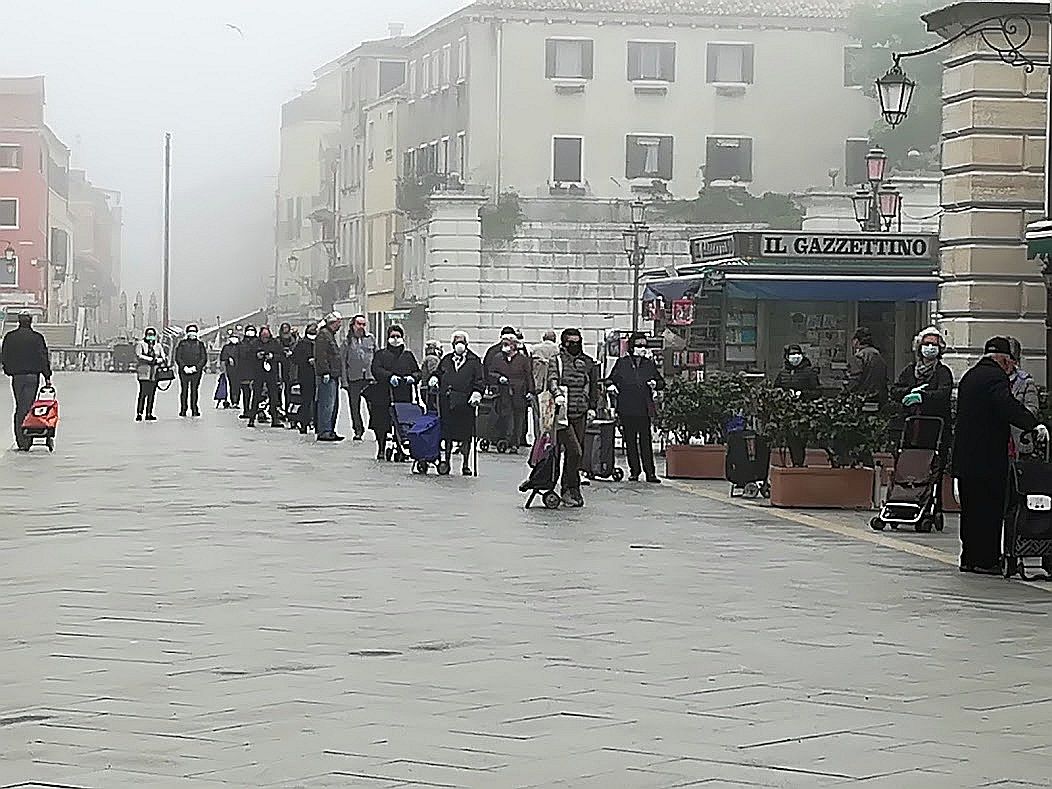
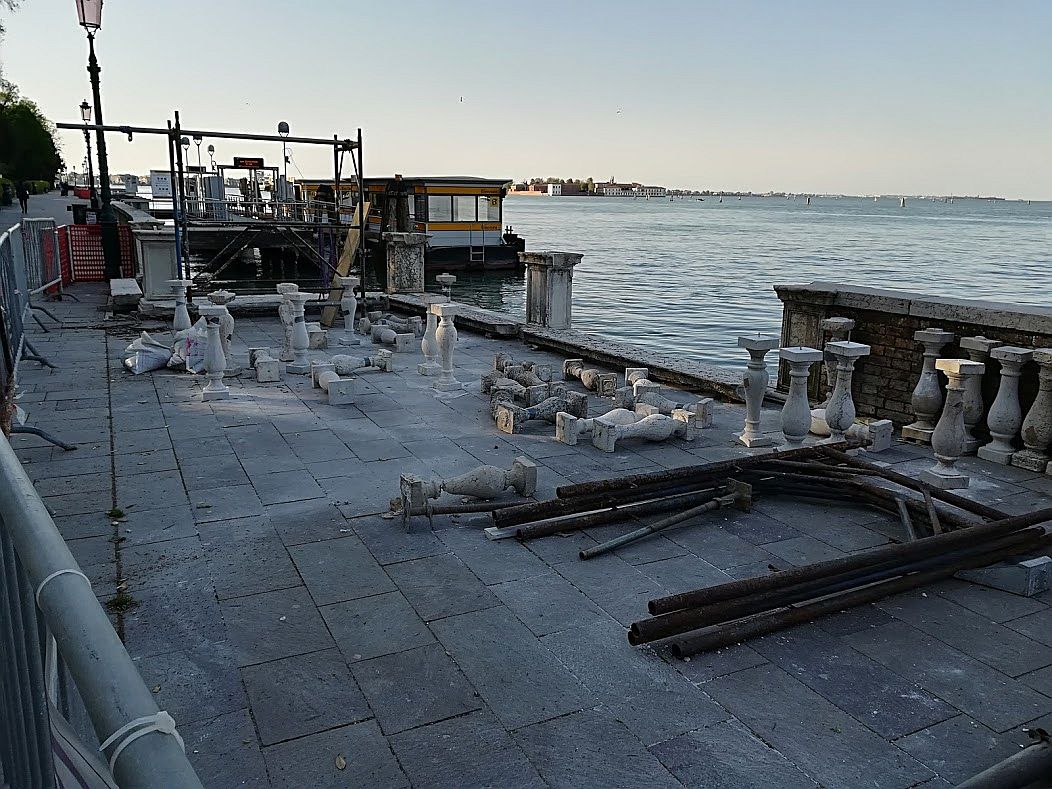
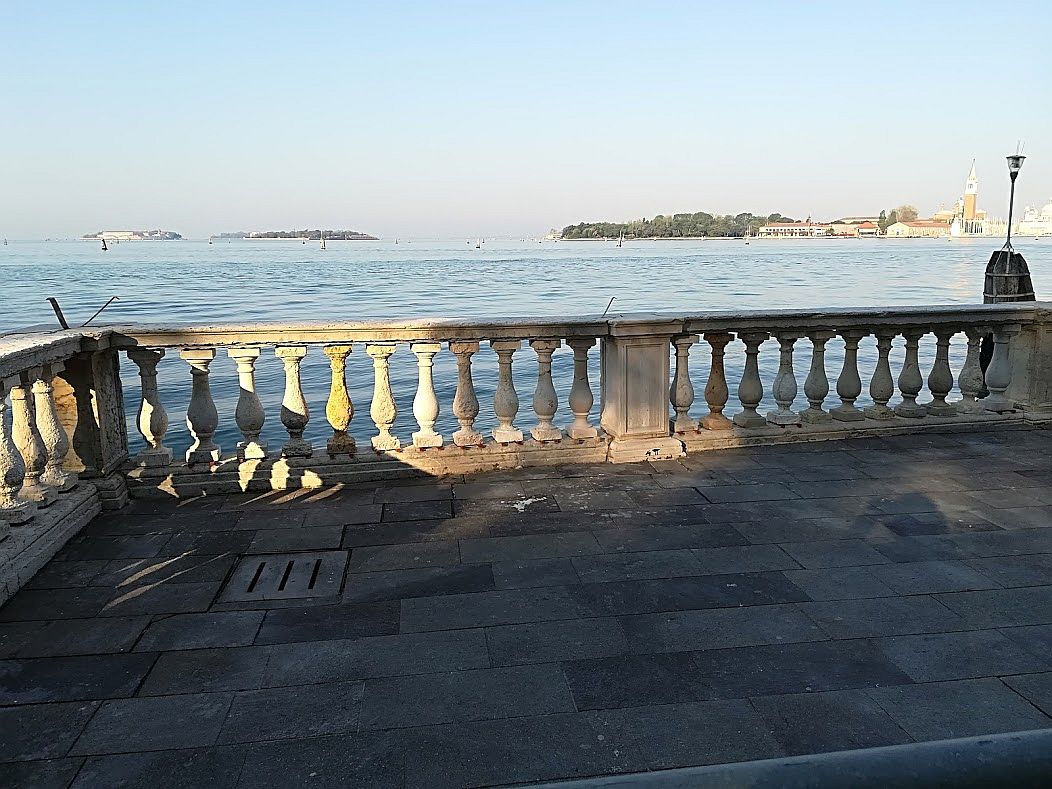
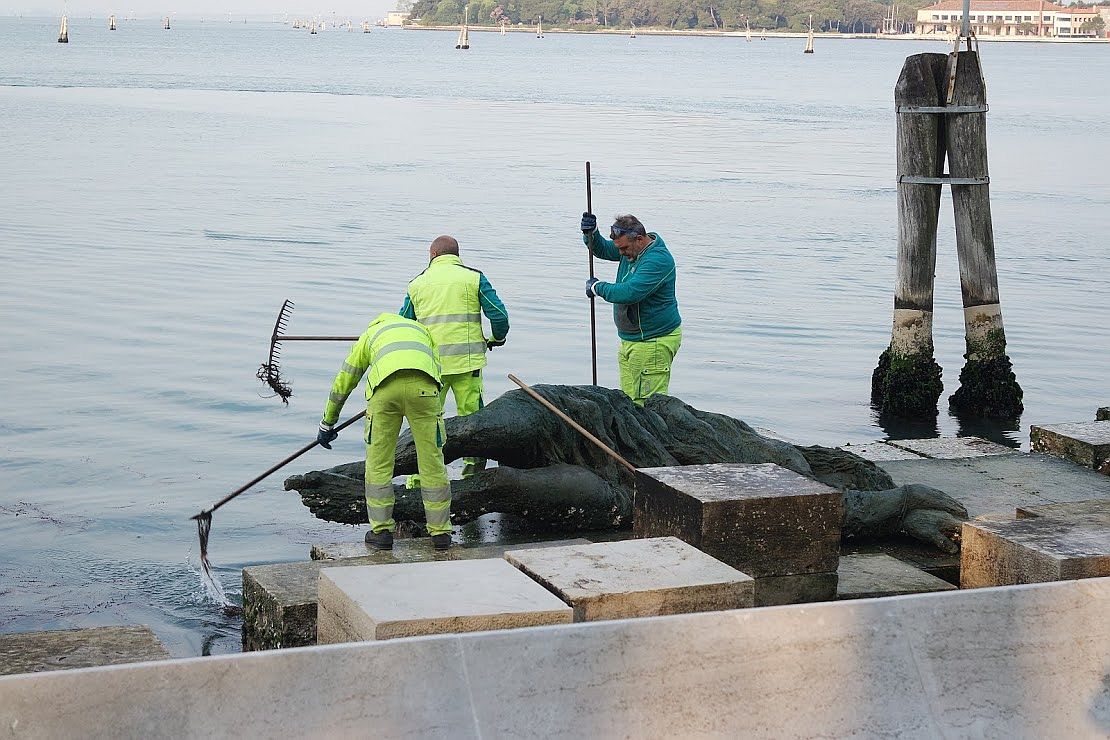

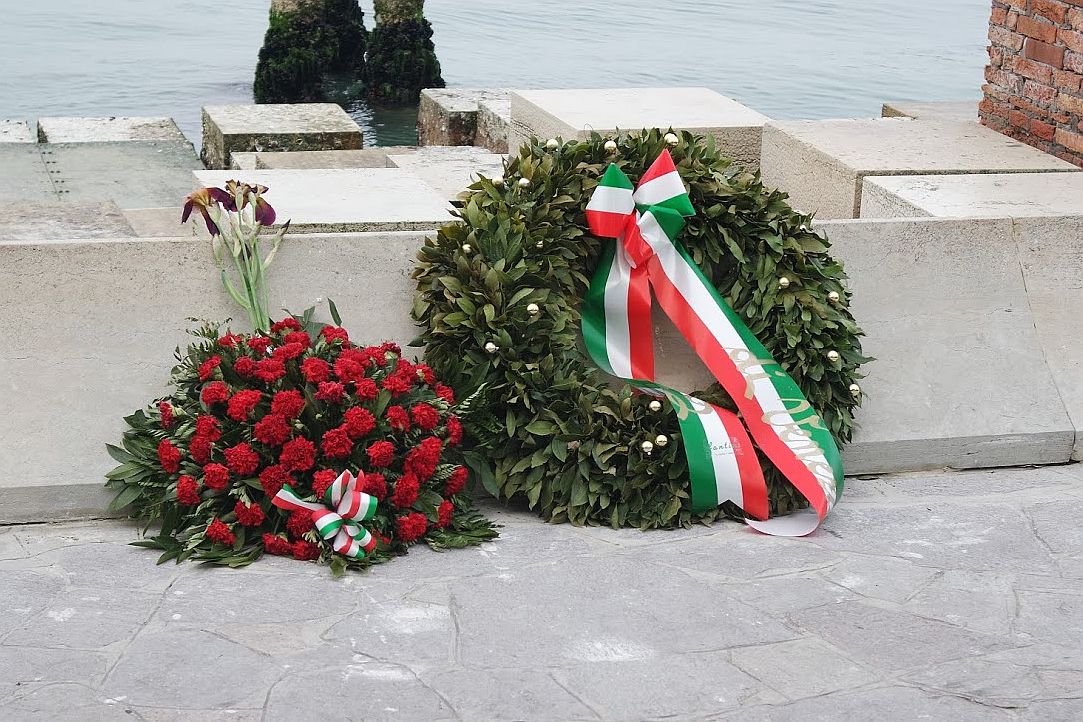

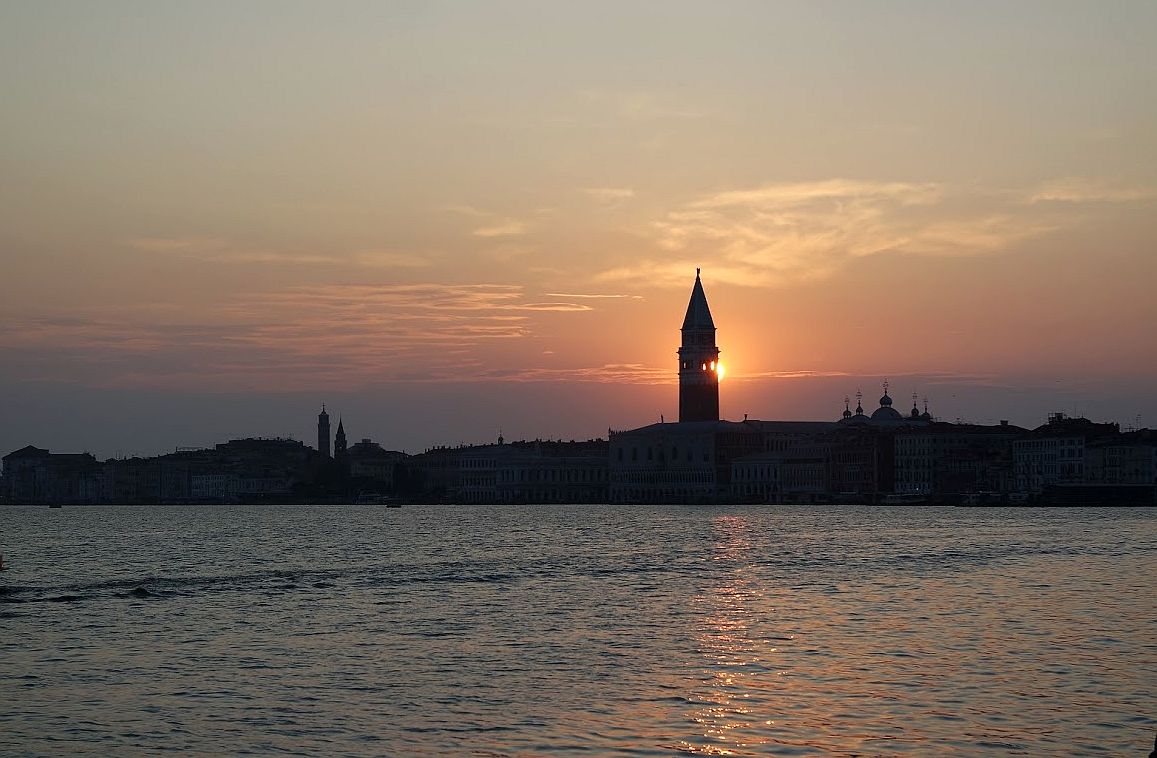
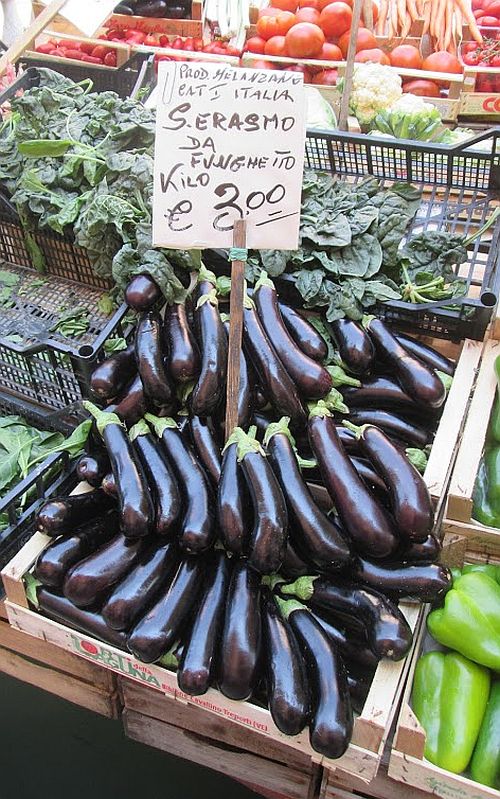
We have been gasping under a suffocating heatwave for at least two weeks (months, years…losing track of everything), with temperatures in the 90s (F) and humidity beyond calculating.
My vital functions are down to the minimum, and evidently my brain isn’t on the “Save First” list, so my posts will also be at the minimum for a short while.
But there was a lady the other morning at the fruit and vegetable boat who gave me an unexpected little jolt.
I had just begun to tell Massimo and his cigarette what I wanted when the lady came bustling up behind me. She already had her vegetation in a thin plastic bag, but she announced that it was threatening to give out at any moment.
Without so much as a by-your-leave (I guess when my brain disappears, the rest of me goes with it?) she extended the bag toward Massimo to demonstrate its fragility and asked him to give her another one. She spoke in Italian but I couldn’t place the accent — it seemed to come from somewhere in the central regions. But I could tell by her behavior that she wasn’t from around here.
“A stronger one,” she added in a way that blended a whiff of anxiety with a strong gust of busybody. “You can see that this one isn’t going to hold out. It really is too thin. Just think if I were to try to take it onto the vaporetto and it broke, I don’t know what I’d do.” She did seem a little keyed up. “So another bag, please. I’ll pay.”
“You know, you could also carry your own canvas shopping bag,” Massimo remarked in a noncommittal way. (He said “canvas,” although everybody uses ripstop nylon these days. Anyway, she knew what he meant.) It was very nice, the way he accommodated her without creating any further anxiety while at the same time letting her know that her fate, where her fruit was concerned, didn’t have to depend on him, or the firemen, or the police divers, or anybody but herself.
“Oh no, I don’t like those bags,” she quickly replied, implying that he’d suggested something her mother had warned her never to be seen with. My own mother was certainly implacable where it came to some things, such as my walking barefoot in the summer on the sidewalk just in front our house, because people would think I belonged to the Jukes and the Kallikaks.
Massimo handed her the never-fail sturdier green plastic bag. “Ten cents.” Asking for the money confirmed that she isn’t from around here; I think he was making a point.
She paid. She left.
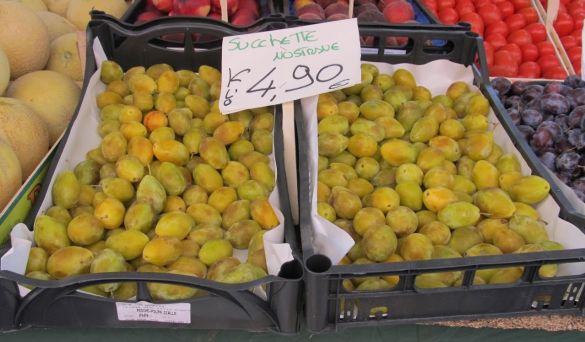
“Wow,” I said as he turned his attention back to me. “No canvas bags.” He gave a little shrug and an even littler smile.
“Yesterday she asked for lemons from Sant’ Erasmo,” he said. “And bananas from Sant’ Erasmo.” (To any reader who might not remember that these delicacies do not, are not, and could not be grown on Sant’ Erasmo — well, maybe the lemons could, I’m not sure — it would be like asking for mangosteens or manioc from Sant’ Erasmo).
“They’re really good,” I said, smiling with fake sincerity. “A lot of people don’t know that. Did you give them to her?”
“Of course.”
What is more treacherous than a very thin and overloaded plastic bag? A tiny bit of information that you don’t understand. Just because she had seen “Sant’ Erasmo” listed on various signs stuck into piles of local produce — eggplants, string beans, leeks — she interpreted this as “best” because it’s right next door, the closest loca that a vore could want.
I was sorry that she’d let herself improvise, because she was clearly so sure of herself in every way. Food for thought. From Sant’ Erasmo.

It’s probably just me, always thinking of how much everything costs and wondering about how people deal with the price of Venice. Someone will remind me that Venice is priceless, but that’s only until the bill comes.
I used to think that to be a young person traveling around Europe in the summer meant sleeping on the beach and buying one banana (unit: each) for lunch and so forth. And as I look at the young people swarming the streets and clogging the vaporettos, it appears that the classic plan is still pretty much in operation.
But this morning I found myself wedged into the #1 going up the Grand Canal (does everyone really swell in the heat? And their luggage too?), next to two, or maybe it was three, young American girls. They had their big Patagonia duffel bags cinched onto their backs, which implied “backpacker with five euros to last till school starts.” But when I suggested to one of them to uncinch her bag and put it on the floor (so she wouldn’t be taking up space that two other people might occupy, which I didn’t say), we had an unexpected conversation.
Me: “So, are you enjoying Venice?”
She: “Oh yes, even though we just got in yesterday and we’re leaving this afternoon. We’re going to Porec (Croatia).”
“That’s nice, you’ll like it.”
“Last night we had dinner at the Marriott Hotel on that island, and today we’re having lunch at the Gritti Palace.”
Evidently their brief time in the world’s most beautiful city, etc. etc., was to be marked by comestibles and not by masterpieces by Titian. And they weren’t using half measures, either.
Here’s the dinner menu at the “Sagra” restaurant at the J.W. Marriott on the “Isola delle Rose.” This island is still referred to as Sacca Sessola by Venetians, and the buildings now boasting five-star everything were once occupied by people with tuberculosis and other respiratory diseases. “Island of the Roses” sounds so much nicer, and so much less Venetian.
But maybe they didn’t feed the inner backpacker at “Sagra.” Maybe they went to “Dopolavoro,” the hotel’s Michelin-starred restaurant. https://www.jwvenice.com/assets/uploads/PDF/menu%20dopolavoro%202017%20giugno%20con%20prezzi.pdf
I didn’t ask where they had slept. I’m assuming it wasn’t on the beach. With bananas.
Down along the Riva dei Sette Martiri, another vision from the rich-o-sphere briefly appeared. I’d like to say I’m hard to impress, having seen Barry Diller’s and Paul Allen’s yachts here, not to mention some of those Russian oligarchs who come here to oligarch. But this is certainly worth at least a second look.
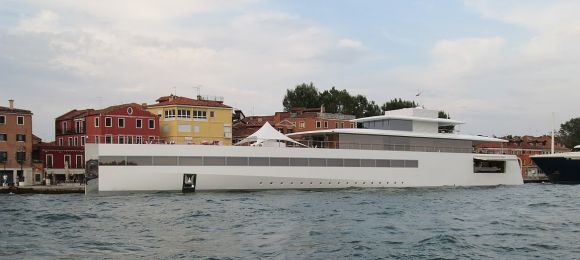
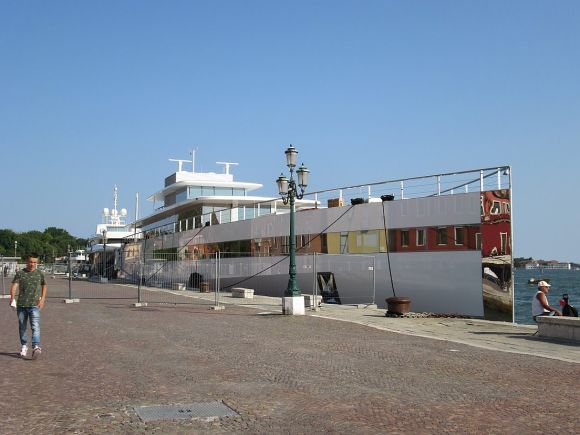
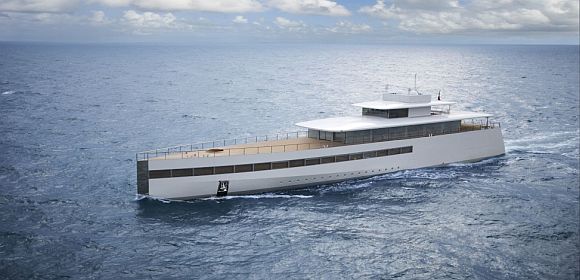
What some charter agencies seem unwilling to state is the identity of the rich person who commissioned it, though one agency says that it “is widely regarded to be Steve Jobs’ yacht.” I’m a stranger to these realms, but why would it be difficult to know this? The current owner is Laurene Powell, Steve Jobs’ widow, though that doesn’t prove anything. In any case, it’s too hot these days (up in the high 90’s) to begin to formulate a sermon, not even a small but perfectly formed preachment, but I will note that (A) it cost 100,000,000 euros ($118,145,000) and (B) Jobs died before it was completed. I don’t suppose anyone ever wondered where all that iMoney they spent on iThings ever went, but now you know that at least some of it is floating around out here.
